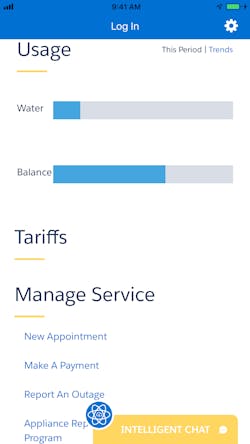Making Water Consumption Reports as Easy to Find as Weather Reports
Water utilities around the world are facing growing disturbing levels of scarcity, especially as the world’s population continues to rise and the climate continues to change. While this is not breaking news, the latest data from the World Resources Institute’s (WRI) Aqueduct Water Risk Atlas finds that 17 countries, which are home to a quarter of the world’s population, face “extremely high” water stress. In these countries, agriculture, industry, and municipalities are drinking up 80% of available surface and groundwater in an average year. When demand rivals supply, even small dry shocks can produce dire consequences.
What is being done? When water utilities plan for the future of their resources, they usually start with the infrastructure. Utilities routinely deal with water loss due to leaky pipes, inefficient treatment facilities, and ruptured main lines. It’s no surprise that in the 2019 AWWA State of the Water Industry report, respondents listed “renewal and replacement of aging water and wastewater infrastructure” and financing those improvements as the top two concerns. If utilities were more efficient in extracting, treating, storing, and transporting water, it stands to reason that it would have a major impact on the amount of water available for use. However, this doesn’t address a key factor to water scarcity: people.
Consumers are using more water than ever and it’s up to utilities to educate their customers on what that might mean for the future. The average U.S. consumer’s water footprint, according to WaterAid.org, is twice the global average, and to equalize that with the rest of the world, U.S. consumers need to reduce their water footprint by a whopping 70%! Companies that take a leadership role in reducing wasteful consumption habits among U.S. consumers will not only help overcome a global humanitarian problem but also save money, enhance brand image, and improve service.
However, to do this right requires digital transformation. Utilities that can aggregate their data into one unified system can provide better transparency to their customers and their own staff. In turn, this gives customers the data they need to see how their usage affects their bill and their environment.
As smart meters and IoT devices start to dominate the water industry, customers will have more access to their usage data. They can see where they peak, what appliances are the least efficient, and if there’s a leak in real time. This becomes more valuable to your customers when they have been trained to see a correlation between the water level in their tub and in the nearby lake.
The technology to implement a true digital transformation is already available to utilities, but very few are making the move to implement them. Customer service agents at water utilities deal with many different software applications on a daily basis. There’s the Customer Information System, the Utility Billing Software, the Meter Data Management application in the front of the office. In the back, there’s a work order management system, SCADA software, and maybe GIS applications. In order to communicate information to clients, utilities are using paper mail, emails, and most recently SMS and social media.
As water scarcity becomes a bigger problem, it will be imperative for utilities to not only increase their communication to their customers, but to make it personal. Using modern technology, customers can get a near real-time look at their usage. Using the large dataset of the entire utility, customers can then compare their usage to their neighbors and customers of similar demographics.
As the world works toward SDG6, the burden to make significant progress will start at the largest water utilities with the greatest risks of water loss, but ultimately it will trickle down to consumers. Utilities should be laying the groundwork today so that water consumers are as engaged with their water source as they are with the local weather and traffic forecast. It’s up to utilities to point them in the right direction using the data that they already have and the technology they should be adopting now.
About the Author
Kelly James
General Manager, Vlocity Energy & Utilities
Kelly James is the General Manager of Vlocity Energy & Utilities

![Water Customer 360 Console Mac Book Pro[6] Water Customer 360 Console Mac Book Pro[6]](https://img.waterworld.com/files/base/ebm/ww/image/2019/09/Water_Customer_360_Console___MacBook_Pro_6_.5d793b18c3890.png?auto=format,compress&fit=max&q=45?w=250&width=250)
![2019 09 03[6] 2019 09 03[6]](https://img.waterworld.com/files/base/ebm/ww/image/2019/09/2019_09_03_6_.5d793b187f43c.png?auto=format,compress&fit=max&q=45?w=250&width=250)